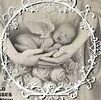
Burial gowns are an alternative to traditional burial clothing, and they can be worn at funeral services. They are often made from soft fabrics, and resemble smart nightgowns, pyjamas or dressing gowns, and come in a range of sizes. They can also be personalised to fit the individual who has died.
Burial clothing is not always purchased from a retail store and can be sourced online or at funeral homes. Some families choose to dress their loved one in their own clothes, which can be an incredibly comforting experience. It may also be helpful if the deceased person has left instructions on what they want to be dressed in, and this can make the process of choosing their funeral attire much easier.
Funeral gowns are also a good option for people who have lost a significant amount of weight in the months or years leading up to their death, and they can provide a more comfortable final resting place for them. They are usually available in a variety of styles and colours, and can be personalised to match the deceased person’s personal preferences.
Shrouds are garments that are made to cover the body of a dead person before burial or cremation, and they can be found in most cultures. Early shrouds were made by family members, but they gradually became a profession in the nineteenth century and now are available in a range of sizes, fabrics and prices.
Some people who have been buried in a shroud have also chosen to wear other burial clothing, such as a robe or a casket cover, for the funeral service. Traditionally, these have been used to protect the body from the elements and keep it clean during viewings.
These can be expensive and may not be available at all funeral homes. Alternatively, some stores specialise in bespoke burial clothing, and they can provide an affordable and thoughtful way to honour the memory of your loved one.
Angel Gowns Project
The Angel Gowns Project is a non-profit organisation that makes and donates beautiful burial gowns for babies. They are based in Guatemala and work with infants who have been stillborn or prematurely born, so they can have the chance to look their best in the final moments of their life.
A lot of these gowns are hand-made, so they are not always cheap to purchase, but the organisation has a great deal of compassion for its customers. Their aim is to reduce the financial burden of parents, who have been bereaved by their child’s death, and they have been very successful in achieving this goal.
In many cultures, the dead are buried in traditional clothing or in their own clothing that is similar to the clothes they wore when alive. This is especially true for those who have died in a religious context, where their customary clothing may be important to them and it can help to ease the pain of grieving families.
For example, a Muslim woman who dies is buried in a white sheet. This is to ensure that her body does not become polluted and she can continue her spiritual journey in heaven.
